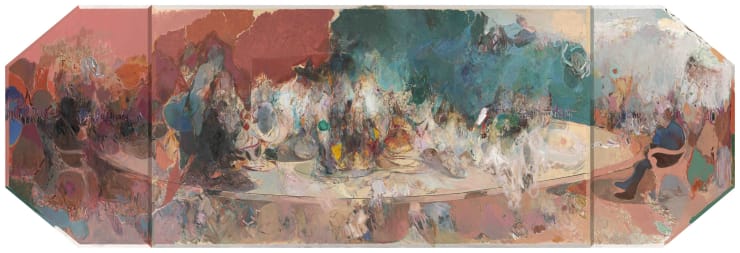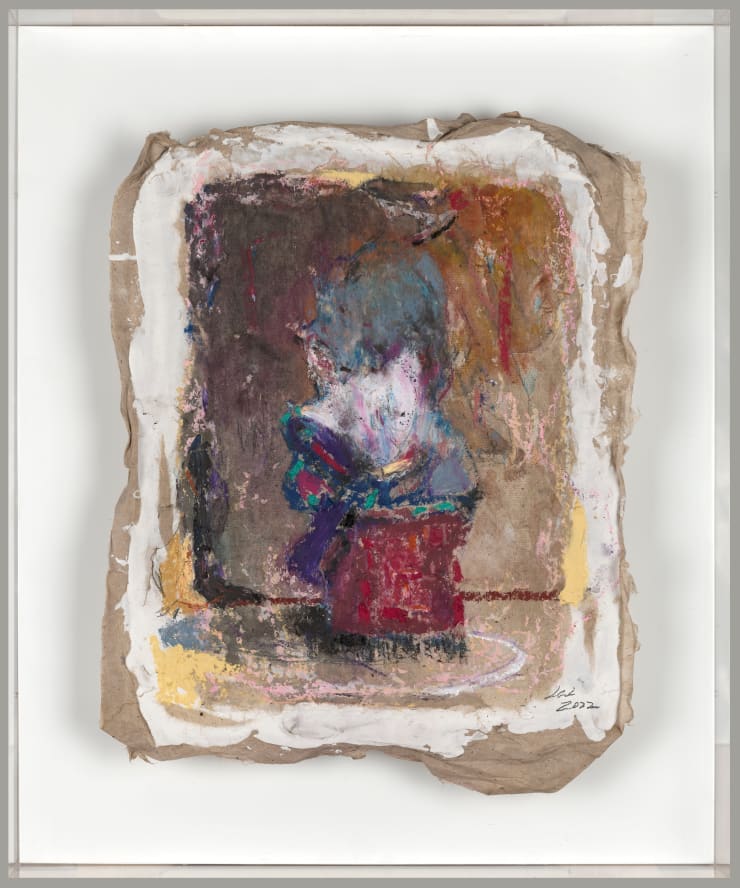Deductions of One's Visual Annals
Past exhibition
Overview
Since 2018, within the context of the Sino-US trade war, globalization and anti-globalization, internationalism and populism, and liberalism and Neo-conservatism, have continuously affected the political and cultural trend. Under the irreversible wave of anti-globalization, it would seem that inevitable challenges arise and to cause impacts on fields from local economy to global trade, from politics to culture, from geopolitical conflicts to immigration issues, and from identity anxiety to civilization conflicts. In this sense, the Russia-Ukraine war in 2022, as well as the endless geopolitical conflicts around the world, can all be seen as important signs of the globalization crisis. In fact, back in 2006, Li Changlong has already created a number of artworks inspired by globalization, such as "Little X's Company in Africa" and "Developing Countries". Only the difference between his early works and the most recent ones is that the perspective at that time emphasized the rise of China in the background of globalization after its entry into the WTO in 2001, rather thanreflecting on globalization from the viewpoints of geopolitics. At the beginning of 2020, the break-out of COVID-19 was unexpected. The realistic situation and lifestyle seem to have changed overnight. Home quarantines, lockdown, PCR tests, and health status check-ins were gradually normalized, day after day, year after year. During the three years of the epidemic, peopleexperienced the unprecedented senses of helplessness, confusion and even despair. For Li Changlong, the insignificance and vulnerability of life, the cruelty and indifference of reality, and the tension of the international situation are all the realities he felt. Fortunately, during the epidemic, he was able to focus on his work in the studio.
Li Changlong also calls his "Terra Nullius" series as the "geopolitical landscape". The reason for "geopolitics" to be a key word is essentially related to the "meta image" of the work. With the help of satellite maps, the artist takes the areas of his focus and are closely related to the current globalization context as the origin of his creation. However, his goal is not to "reproduce" them, but to take these satellite maps as "meta images" and then reorganize them according to his own understanding and visual order of the picture. In the whole creative process, language and rhetoric, namely aesthetic narration, have become the key. In fact, the reconstruction of the image benefits from the artist's reinterpretation of it through different means. In terms of expression language, it is descriptive, expressive, abstract and symbolic. They do not follow a unified modeling rule. And those uncertain factors and repeated smears in the process of painting have also become an important part of language expression. As for the understanding and expression of color, the new work continues the research method of "color layers". On the one hand, the artist needs to refine and transform the color of the described object to transform it into several or more "color layers" in the way of "subtraction"; On the other hand, in the visual field formed by the canvas and the frame, the color layers are decomposed and reorganized to make it a synchronic existence under the relationship of continuous superposition, interweaving and destruction. Once the satellite map is connected with the geographical conflict, and in the process of the artist's continuous coding, it also injects narrativity into the work. However, this way is metaphorical and symbolic. Because under the chaotic and obscure strokes and colors, and on the barren and burnt landscape, it represents the crisis and uncertainty that globalization is facing today. Of course, from the emphasis on image narration in the early paintings to the reorganization and coding of satellite images in the recent works, Li Changlong has spent more than ten years building his own visual annals.
Whether it is the continuous generation of forming language or color, Li Changlong did not do any presetting in advance. On the contrary, he pursued the natural growth inside the frame. This creative method is somewhat similar to the surrealist "automatic writing", or it is to elevate the uncertain and accidental factors in painting to the aesthetic level. Therefore, deduction has become a new possibility, and the essence of deduction is the continuous self-growth of language. The "theater sense" in the early paintings has been further strengthened in the new works, so the picture seems to be centerless. In the interpretation of form and language, the picture continues to extend and spread to the frame. Under the name of "geopolitical landscape", we can also see a new development direction of Li Changlong's painting, which is to try to connect the formal expression and aesthetic taste of the picture with the visual structure and aesthetic habits of traditional Chinese painting. It is from this point of view that in the series of works such as "Terra Nullius", it is not difficult to see that Li Changlong's paintings are influenced by the narrative structure of Dunhuang frescoes. Perhaps, the so-called "landscape" is more like a hint, that is, the continuation and dialogue of an oriental aesthetic interest and visual concepts. (Text / He Guiyan)
Works
-
 李昌龙 Li Changlong, 演绎 | Deduction, 2022
李昌龙 Li Changlong, 演绎 | Deduction, 2022 -
 李昌龙 Li Changlong, 旗袍 | Cheongsam, 2022
李昌龙 Li Changlong, 旗袍 | Cheongsam, 2022 -
 李昌龙 Li Changlong, 口感! | Texture!, 2022
李昌龙 Li Changlong, 口感! | Texture!, 2022 -
 李昌龙 Li Changlong, 2022.2.24-, 2022
李昌龙 Li Changlong, 2022.2.24-, 2022 -
 李昌龙 Li Changlong, 白光 | White Light, 2022
李昌龙 Li Changlong, 白光 | White Light, 2022 -
 李昌龙 Li Changlong, 无主地-北纬38° | Terra Nullius-38 Degrees North, 2022
李昌龙 Li Changlong, 无主地-北纬38° | Terra Nullius-38 Degrees North, 2022 -
 李昌龙 Li Changlong, 21克 | 21 Grams, 2022
李昌龙 Li Changlong, 21克 | 21 Grams, 2022 -
 李昌龙 Li Changlong, 21克-1 | 21 Grams-1, 2022
李昌龙 Li Changlong, 21克-1 | 21 Grams-1, 2022 -
 李昌龙 Li Changlong, 21克-2 | 21 Grams-2, 2022-23
李昌龙 Li Changlong, 21克-2 | 21 Grams-2, 2022-23 -
 李昌龙 Li Changlong, 21克-3 | 21 Grams-3, 2022
李昌龙 Li Changlong, 21克-3 | 21 Grams-3, 2022 -
 李昌龙 Li Changlong, 21克-4 | 21 Grams-4, 2022
李昌龙 Li Changlong, 21克-4 | 21 Grams-4, 2022 -
 李昌龙 Li Changlong, 21克-5 | 21 Grams-5, 2022
李昌龙 Li Changlong, 21克-5 | 21 Grams-5, 2022 -
 李昌龙 Li Changlong, 21克-6 | 21 Grams-6, 2022
李昌龙 Li Changlong, 21克-6 | 21 Grams-6, 2022 -
 李昌龙 Li Changlong, 21克-7 | 21 Grams-7, 2022
李昌龙 Li Changlong, 21克-7 | 21 Grams-7, 2022 -
 李昌龙 Li Changlong, 21克-8 | 21 Grams-8, 2022
李昌龙 Li Changlong, 21克-8 | 21 Grams-8, 2022 -
 李昌龙 Li Changlong, 21克-9 | 21 Grams-9, 2022
李昌龙 Li Changlong, 21克-9 | 21 Grams-9, 2022
Video


















